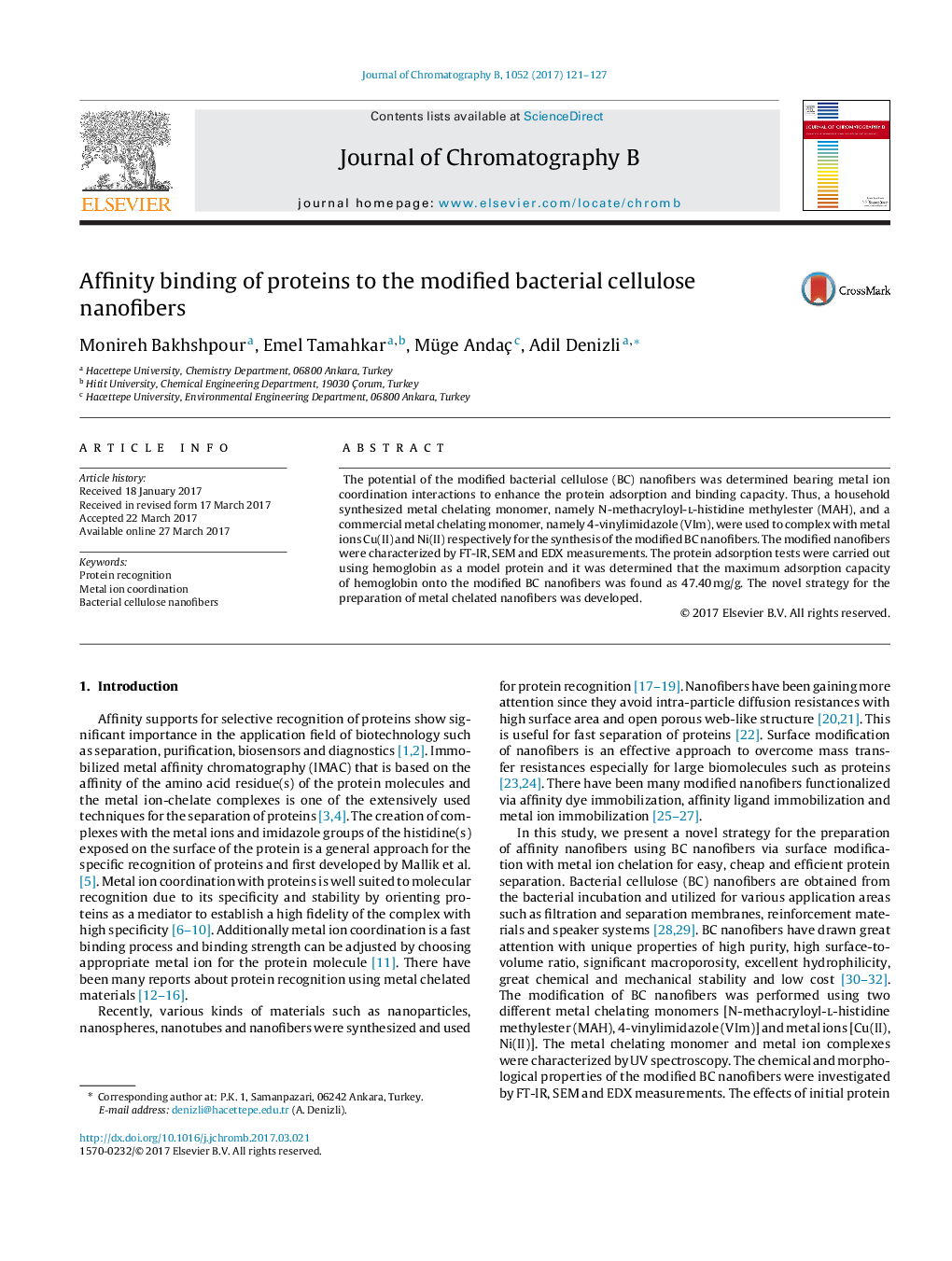| Article ID | Journal | Published Year | Pages | File Type |
|---|---|---|---|---|
| 5136616 | Journal of Chromatography B | 2017 | 7 Pages |
Abstract
The potential of the modified bacterial cellulose (BC) nanofibers was determined bearing metal ion coordination interactions to enhance the protein adsorption and binding capacity. Thus, a household synthesized metal chelating monomer, namely N-methacryloyl-l-histidine methylester (MAH), and a commercial metal chelating monomer, namely 4-vinylimidazole (VIm), were used to complex with metal ions Cu(II) and Ni(II) respectively for the synthesis of the modified BC nanofibers. The modified nanofibers were characterized by FT-IR, SEM and EDX measurements. The protein adsorption tests were carried out using hemoglobin as a model protein and it was determined that the maximum adsorption capacity of hemoglobin onto the modified BC nanofibers was found as 47.40Â mg/g. The novel strategy for the preparation of metal chelated nanofibers was developed.
Related Topics
Physical Sciences and Engineering
Chemistry
Analytical Chemistry
Authors
Monireh Bakhshpour, Emel Tamahkar, Müge Andaç, Adil Denizli,
